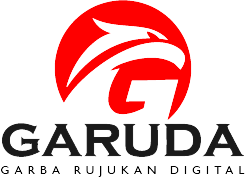EVALUASI MANAJEMEN ASET DALAM MENGOPTIMALKAN PENGELOLAAN ASET TETAP DAERAH KOTA SEMARANG
DOI:
https://doi.org/10.34127/jrlab.v11i1.491Abstract
The purpose of this study was to determine the management of BMD in Semarang City and to determine efforts to optimize the management of BMD in Semarang City. This type of research is qualitative or case study. The data collection method is carried out in natural settings (natural conditions), primary data sources, and data collection techniques are mostly on observation, interviews, and documentation. Qualitative data processing methods can be done through three stages, namely data processing, data presentation, and drawing conclusions. There are four data validity criteria, namely validity, portability, robustness and confirmability. In verifying the data, the researcher used the data validation method, namely triangulation. The results of the study concluded that the Semarang City Regional Asset management mechanism was basically in accordance with Permendagri 17 of 2021 concerning Systematic Technical Guidelines for Bookkeeping, Inventorying and Reporting of BMD. However, in practice the implementation of this regulation has not been maximized, this is due to several obstacles in its implementation. One way that must be taken to achieve accountability and transparency in the management of BMD is by publication, namely to find out information about regional assets/goods using the internet. Information about regional assets/goods owned by a government that is given to the public will increase public confidence in the control of BMD. As long as the assets are in their useful life, their use must be optimized using a rental mechanism, namely the use of regional property by other parties for a certain period of time by receiving money in return; then the build-to-hand-over (BGS) and the build-to-use (BSG) mechanisms.
Keywords: Asset Management, Regional Asset Management
References
Albrecht, W. S. (2021). Fraud Examination. Cengage Learning.
Aprico Aring, Jantje J. Tinangon, I. E. (2020). Penerapan Akuntansi Pengakuan Aset Tetap Pada Badan Pengelola Keuangan Dan Aset Daerah Kabupaten Minahasa. Going Concern: Jurnal Riset Akuntansi, 15(2). https://doi.org/https://doi.org/10.32400/gc.15.2.27854.2020
Astini, Y. (2018). Kualitas Aparatus, Sistem Informasi, Sistem Pengendalian Intern Dan Efektivitas Manajemen Aset Tetap. Jurnal Ilmiah Akuntansi Dan Bisnis, 13(2), 173–184. https://doi.org/https://doi.org/10.24843/JIAB.2018.v13.i02.p10
Creswell, J. W. (2014). Research design pendekatan kualitatif, kuantitatif, dan mixed. Pustaka Pelajar.
Fuad, K. (2015). Pengaruh Independensi, Kompetensi, dan Prosedur Audit Terhadap Tanggung Jawab Dalam Pendeteksian Fraud. Jurnal Dinamika Akuntansi, 7(1).
K McCusker; S Gunaydin. (2015). Research using qualitative, quantitative or mixed methods and choice based on the research. Perfusion, 30(7), 537–542. https://doi.org/10.1177/0267659114559116
M.S. Kolinung, Ilat V, P. S. (2015). Analisis Pengelolaan Aset Tetap Pada Dinas Pendapatan Pengelolaan Keuangan Dan Aset Daerah Kota Tomohon. Jurnal EMBA, 3(1), 818–830.
Mahmudi. (2009). Manajemen Keuangan Daerah. Erlangga.
Maleong, L. . (2018). Metode Penelitian Kualitatif. Remaja Rosda Karya.
Meo, Y., Made, A., & wulandari, R. (2021). Analisis Pengelolaan Aset Tetap Dan Penerapan Standar Akuntansi Pemerintah Pada Badan Pengelolaan Keuangan Dan Aset Daerah Kota Malang. Jurnal Riset Mahasiswa Akuntansi, 9(1), 1–12. https://doi.org/https://doi.org/10.21067/jrma.v9i1.5456
Miles, M.B, Huberman, A.M, dan S. (2014). Qualitative Data Analysis, A Methods Sourcebook (Tjetjep Rohindi Rohidi (ed.); 3rd ed.). Sage Publications, UI-Press.
Purba, R. (2019). Pengelolaan Aset Tetap Daerah Dalam Mengoptimalkan Pemanfaatan aset Daerah. Jurnal Akuntansi Bisnis & Publik, 9(2), 152–164.
Riyanto, B. (2010). Dasar-Dasar Pembelanjaan Perusahaan (4th ed.). BPFE.
Riyanto, B. (2012). Dasar-dasar Pembelanjaan (4th ed.). BPFE.
Rudianto, E. (2015). Accounting Principles Prinsip – Prinsip Akuntansi Berbasis Sak Etap. Rajawali Pers.
Siregar. Doli. D. (2004). Manajemen Aset. Satyatama Graha Tara.
Sugiyono. (2015). Metode Penelitian Kombinasi (Mix Methods). Alfabeta.
Sugiyono. (2017). Metode Penelitian Kombinasi (Mix Methods). Alfabeta.
Sugiyono. (2018). Metode Penelitian Kombinasi (Mixed Methods). Alfabeta.
Suwanda, D. (2013). Strategi Mendapatkan Opini WTP Laporan Keuangan PEMDA. PPM.
Tersiana, A. (2018). Metode Penelitian. Penerbit Yogyakarta.
Wartuny, S. (2020). Analisis Pengelolaan Aset Pada Badan Pengelolaan Keuangan Dan Aset Daerah Kabupaten Maluku Barat Daya. Kupna Jurnal, 1(1), 22–33.
Wolfe, David T., and D. R. H. (2004). The Fraud Diamond: Considering the Four Elements of Fraud. The CPA Journal, 74(12), 38–42. https://digitalcommons.kennesaw.edu/cgi/viewcontent.cgi?article=2546&context=facpubs
Yusuf, A. M. (2014). Metode Penelitian Kuantitatif, Kualitatif & Penelitian Gabungan. prenadamedia group.
Peraturan Menteri Dalam Negeri Nomor 17 Tahun 2021 tentang Pedoman Pengelolaan Barang Daerah
Peraturan Daerah Kota Semarang Nomor 5 Tahun 2007 tentang Pengelolaan Barang Milik
Peraturan Walikota Semarang Nomor 19A Tahun 2009 tentang Petunjuk Teknis Pengelolaan Barang Milik Daerah
Downloads
Published
Issue
Section
License
Jurnal Lentera Bisnis disebarluaskan di bawah Lisensi Creative Commons Atribusi-BerbagiSerupa 4.0 Internasional.
Berdasarkan ciptaan pada https://plj.ac.id/ojs/index.php/jrlab





